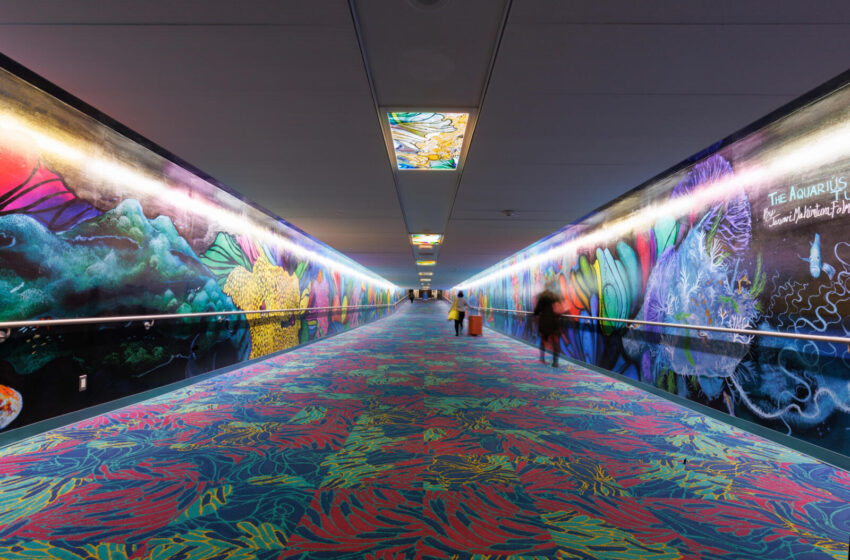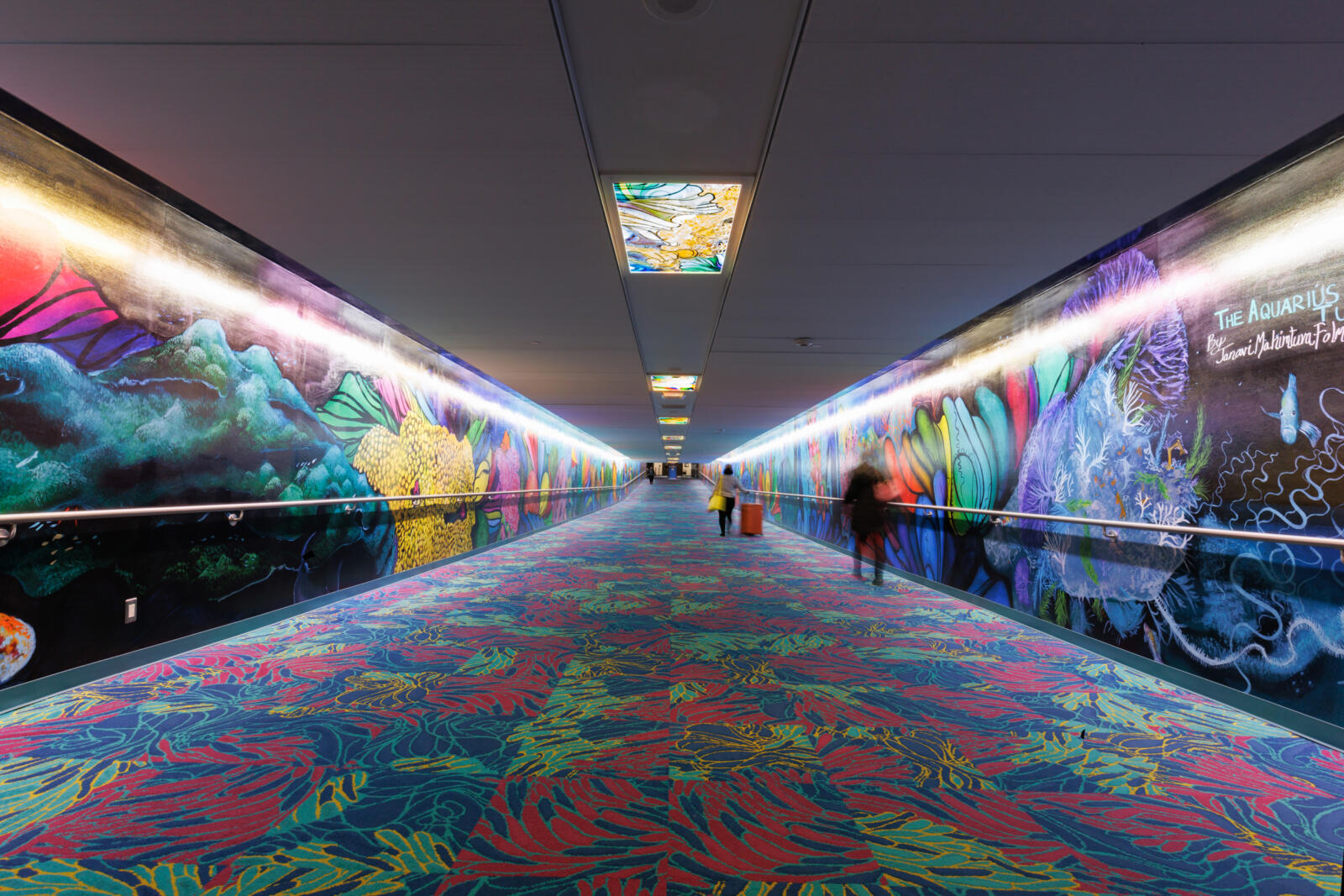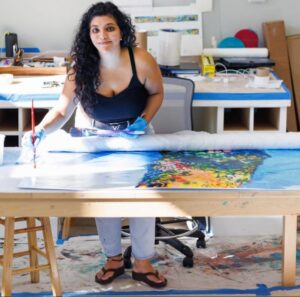Indian American artist behind America’s first art tunnel

 Janavi Mahimtura Folmsbee created a 240-feet-long immersive audio-visual treat at Houston international airport
Janavi Mahimtura Folmsbee created a 240-feet-long immersive audio-visual treat at Houston international airport
If you are traveling between terminals D and E at the George Bush International Airport in Houston, Texas you will be amazed to see an immersive audio-visual treat.
Unveiled earlier this year, the Aquarius Art Tunnel is a 240-feet-long art experience. The tunnel showcases species of fish, coral, sharks, dolphins, barracudas, lobsters, manta rays, and, even, oil rigs, among other ocean creatures.
The floor of the tunnel is a coral carpet, and the accompanying sounds are a combination of classical music and the artist’s own meditative, underwater breath, created by Andrew Karnavas.
Read: Indian American artist launches immersive exhibit at Houston airport (December 14, 2022)
The brainchild behind the art experience is Indian American artist Janavi Mahimtura Folmsbee. As perhaps the first ever project spearhead by an artist of color that represents contemporary art in America, the Aquarius project is special in many ways.
As Mahimtura Folmsbee herself said at the launch that the tunnel also has a special significance for her as it is where she, and countless others, take the flight home to India.
The artist who hopes to create a bridge between science and art while highlighting essential natural resources and marine life speaks to the American Bazaar about helming the project and what it means for other artists of color in America.
 AB: Tell us everything about the mural.
AB: Tell us everything about the mural.
JF: The Aquarius Art Tunnel is a 240 feet immersive Art tunnel Installation. It comprises two, unique 240 by 9 feet fine art murals. The hallway is approximately 20 feet wide, and currently covered with 700 yards of custom designed sea anemone and abstract inspired carpet design.
There are 15 unique lenticular works of art in the ceiling that have lighting components and three unique images in each lenticular work. A total of 116 custom handcrafted lighting fixtures of side lighting reflect light on quartz crystal pigment in the paint on the murals, 58 for each side of the tunnel.
There is also a sound component and an augmented reality experience through an instagram filter. This work of art is not just a mural. It is truly an experience for any visitor from all walks of life.
Read: Ancient Hindu, Jain paintings, sculptures showcased in Florida (December 10, 2022)
AB: How did it come about? Were there many artists in consideration? Take us through the process.
JF: I applied to this call as when I envisioned this space, I saw the potential that such a rare and monumental site offered, it is a gift for the visionary and dreamer or a tinker, alchemist I choose to be.
I applied for a request for qualifications (RFQ)process open to all Texas resident artists and artists who may have lived or originally been from Texas and was selected from 347 applicants for the initial round.
Then I pitched a proposal as a finalist of three final candidates and was selected through a final panel. It took a year through the entire selection process. I won the final proposal amongst the three finalists.
AB: Do you feel that for an artist of color it is difficult to break into the art scene just as in entertainment and other industries? As an Indian origin artist in the US, what is your take on the general mainstream awareness about Indian American artists or Indian art in the country?
JF: People often forget it is difficult in general as an artist to make it as an artist. The industry is competitive and is highly subjective in nature. I have learnt to only compete with myself and to keep going no matter what the haters say.
There will always be some that don’t wish well and others that want you to succeed. I really believe that when you put the right energy out that reflects back to you. The key to success is to never give up. Failure only comes from giving up and as an artist.
Read: Meet the only Indian woman artist to be included in the Houston Airport Systems art collection! (December 8, 2022)
I think it’s definitely difficult as a woman in the field of public art. Women are often overlooked rather than race, because of the physical and strenuous demands that public art often requires, we are often underestimated in our capabilities physically because of scale and scope.
I aspire to inspire women and Indian artists and other artists of color to keep doing what they love and not change who they are to fit into the norm or required, requested cultural demands that today’s grant driven art world demands at times and can distract an artist to steer off course.
